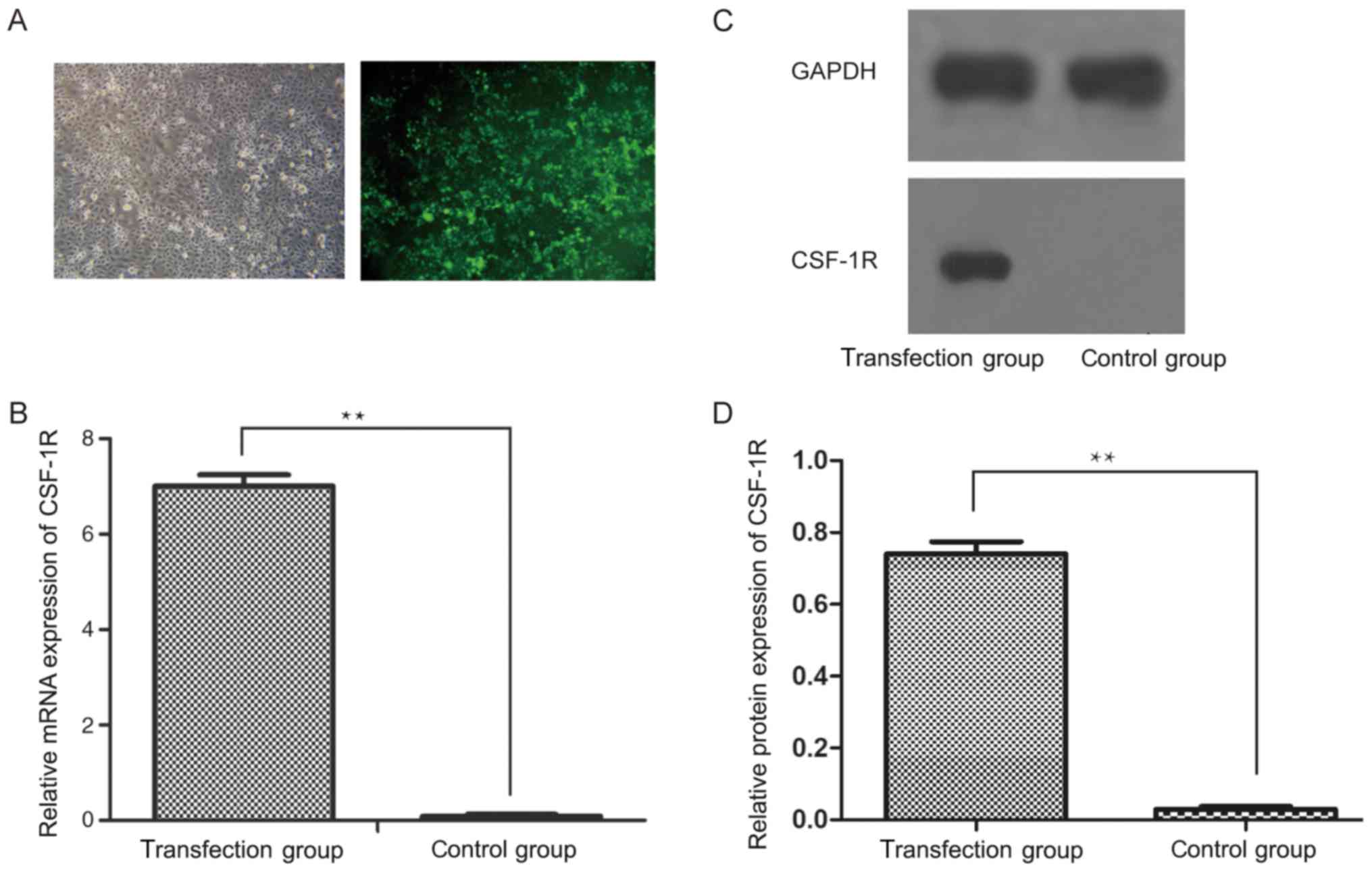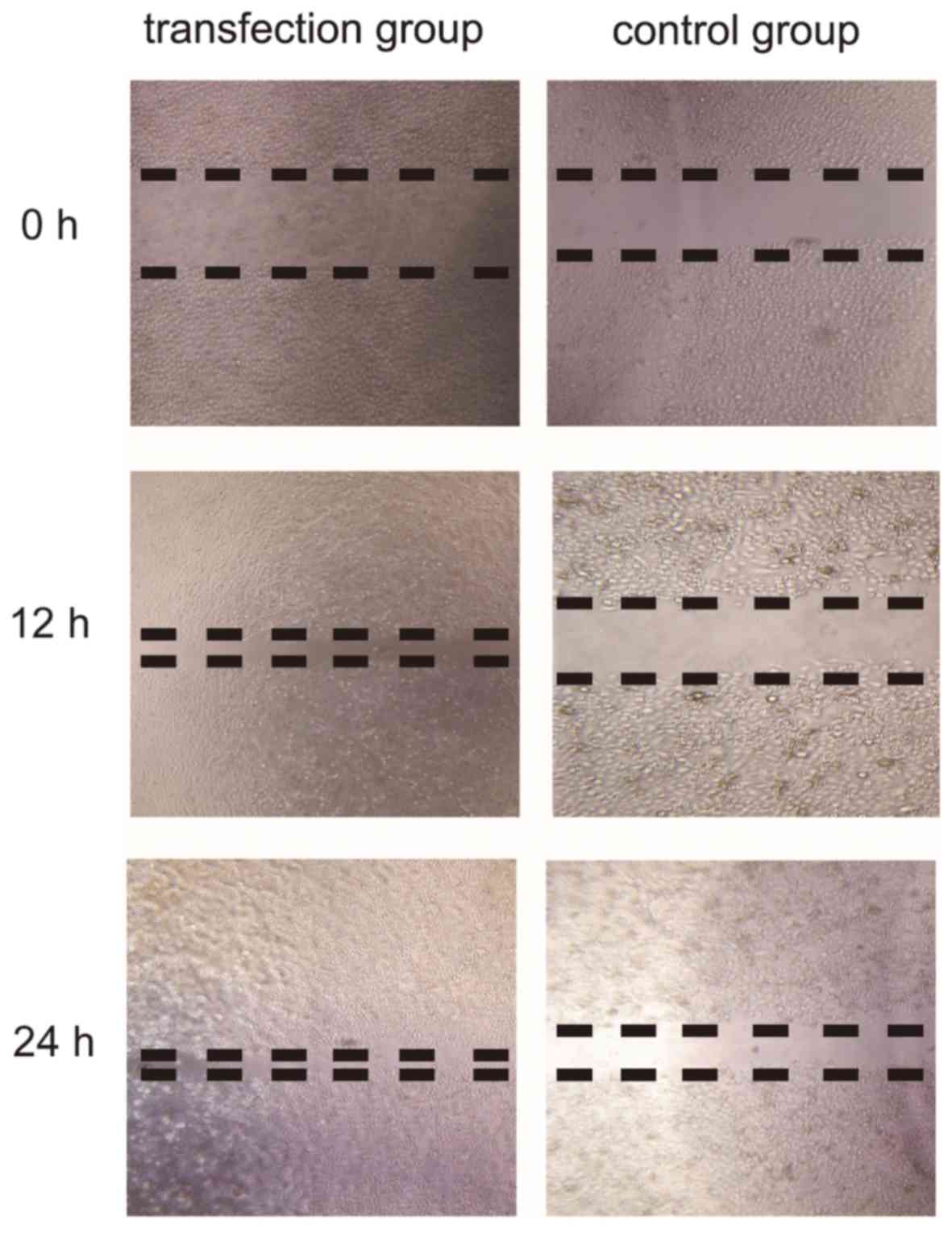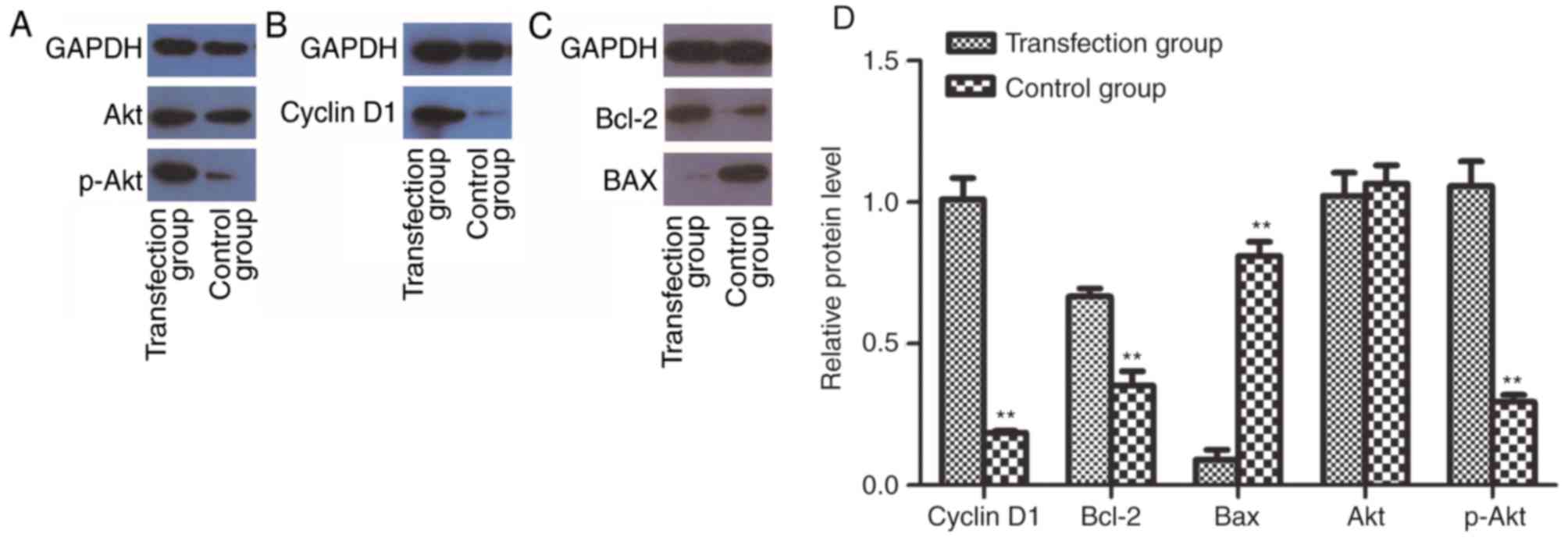|
1
|
Razak AR, Siu LL, Liu FF, Ito E,
O'Sullivan B and Chan K: Nasopharyngeal carcinoma: The next
challenges. Eur J Cancer. 46:1967–1978. 2010. View Article : Google Scholar : PubMed/NCBI
|
|
2
|
Chua DT, Sham JS, Wei WI, Ho WK and Au GK:
The predictive value of the 1997 American Joint Committee on cancer
stage classification in determining failure patterns in
nasopharyngeal carcinoma. Cancer. 11:2845–2855. 2001. View Article : Google Scholar
|
|
3
|
Guo Y, Zhu XD, Qu S, Li L, Su F, Li Y,
Huang ST and Li DR: Identification of genes involved in
radioresistance of nasopharyngeal carcinoma by integrating gene
ontology and protein-protein interaction networks. Int J Oncol.
40:85–92. 2012.PubMed/NCBI
|
|
4
|
Yang S, Chen J, Guo Y, Lin H, Zhang Z,
Feng G, Hao Y, Cheng J, Liang P, Chen K, et al: Identification of
prognostic biomarkers for response to radiotherapy by DNA
microarray in nasopharyngeal carcinoma patients. Int J Oncol.
40:1590–1600. 2012.PubMed/NCBI
|
|
5
|
Huang L, Xu X, Hao Y, Chen J, Li L, Cheng
J, Chen Z, Liang W, Yang J and Ao W: Overexpression of CSF-1R in
nasopharyngeal carcinoma. Rom J Morphol Embryol. 56:1279–1283.
2015.PubMed/NCBI
|
|
6
|
Yu W, Chen J, Xiong Y, Pixley FJ, Dai XM,
Yeung YG and Stanley ER: CSF-1 receptor structure/function in
MacCsflr-/-macrophages: Regulation of proliferation,
defferetiation, and morphology. J Leukoc Biol. 84:852–863. 2008.
View Article : Google Scholar : PubMed/NCBI
|
|
7
|
Beck AH, Espinosa I, Edris B, Li R,
Montgomery K, Zhu S, Varma S, Marinelli RJ, van de Rijn M and West
RB: The macrophage colony stimulating factor-1 response signature
in breast carcinoma. Clin Cancer Res. 15:778–787. 2009. View Article : Google Scholar : PubMed/NCBI
|
|
8
|
Pixley FJ: Macrophage migration and its
regulation by CSF-1. Int J Biochem Cell B. 2012:5019622012.
|
|
9
|
Swierczak A, Cook AD, Lenzo JC, Restall
CM, Doherty JP, Anderson RL and Hamilton JA: The promotion of
breast cancer metastasis caused by inhibition of CSF-1R/CSF-1
signaling is blocked by targeting the G-CSF receptor. Cancer
Immunol Res. 2:765–776. 2014. View Article : Google Scholar : PubMed/NCBI
|
|
10
|
Gruessner C, Gruessner A, Glaser K,
Abushahin N, Laughren C, Zheng W and Chambers SK: Biomarkers and
endosalpingiosis in the ovarian and tubal microenvironment of women
at high-risk for pelvic serous carcinoma. Am J Cancer Res. 4:61–72.
2014.PubMed/NCBI
|
|
11
|
Kuropkat C, Dünne AA, Plehn S, Ossendorf
M, Herz U, Renz H and Werner JA: Macrophage colony-stimulating
factor as a tumor marker for squamous cell carcinoma of the head
and neck. Tumour Biol. 24:236–240. 2003. View Article : Google Scholar : PubMed/NCBI
|
|
12
|
Gazdar AF and Minna JD: Deregulated EGFR
signaling during lung cancer progression: Mutations, amplicons, and
autocrine loops. Cancer Prev Res (Phila). 1:156–160. 2008.
View Article : Google Scholar : PubMed/NCBI
|
|
13
|
Kirma N, Luthra R, Jones J, Liu YG, Nair
HB, Mandava U and Tekmal RR: Overexpression of the colony
stimulating factor (CSF-1) and/or its receptor c-fms in mammary
glands of transgenic mice results in hyperplasia and tumor
formation. Cancer Res. 64:4162–4170. 2004. View Article : Google Scholar : PubMed/NCBI
|
|
14
|
Torti D and Trusolino L: Oncogene
addiction as a foundational rationale for targeted anticancer
therapy: Promises and perils. EMBO Mol Med. 3:623–636. 2011.
View Article : Google Scholar : PubMed/NCBI
|
|
15
|
Livak KJ and Schmittgen TD: Analysis of
relative gene expression data using real-time quantitative PCR and
the 2(-Delta Delta C(T)) method. Methods. 25:402–408. 2001.
View Article : Google Scholar : PubMed/NCBI
|
|
16
|
Torre LA, Bray F, Siegel RL, Ferlay J,
Lortet-Tieulent J and Jemal A: Global cancer statistics, 2012. CA
Cancer J Clin. 65:87–108. 2015. View Article : Google Scholar : PubMed/NCBI
|
|
17
|
Kogan M, Haine V, Ke Y, Wigdahl B,
Fischer-Smith T and Rappaport J: Macrophage colony stimulating
factor regulation by nuclear factor kappa B: A relevant pathway in
human immunodeficiency virus type 1 infected macrophages. DNA Cell
Biol. 31:280–289. 2012. View Article : Google Scholar : PubMed/NCBI
|
|
18
|
Liu W, Xu GZ, Jiang CH and Tian J:
Macrophage colony-stimulating factor and its receptor signaling
augment glycated albumin-induced retinal microglial inflammation in
vitro. BMC Cell Biol. 12:52011. View Article : Google Scholar : PubMed/NCBI
|
|
19
|
Achkova D and Maher J: Role of the
colony-stimulating factor (CSF)/CSF-1 receptor axis in cancer.
Biochem Soc Trans. 44:333–341. 2016. View Article : Google Scholar : PubMed/NCBI
|
|
20
|
Foster P, Yamaguchi K, Hsu PP, Qian F, Du
X, Wu J, Won KA, Yu P, Jaeger CT, Zhang W, et al: The selective
PI3K inhibitor XL147 (SAR245408) inhibits tumor growth and survival
and potentiates the activity of chemotherapeutic agents in
preclinical tumor models. Mol Cancer Ther. 14:931–940. 2015.
View Article : Google Scholar : PubMed/NCBI
|
|
21
|
Li XR, Liu M, Zhang YJ, Wang JD, Zheng YQ,
Li J, Ma B and Song X: Evaluation of ER, PgR, HER-2, Ki-67, cyclin
D1, and nm23-H1 as predictors of pathological complete response to
neoadjuvant chemotherapy for locally advanced breast cancer. Med
Oncol. 28(Suppl 1): S31–S38. 2011. View Article : Google Scholar : PubMed/NCBI
|
|
22
|
He Y, Liu Z, Qiao C, Xu M, Yu J and Li G:
Expression and significance of Wnt signaling components and their
target genes in breast carcinoma. Mol Med Rep. 9:137–143. 2013.
View Article : Google Scholar : PubMed/NCBI
|
|
23
|
Kanazawa T, Misawa K, Misawa Y, Uehara T,
Fukushima H, Kusaka G, Maruta M and Carey TE: G-protein-coupled
receptors: Next generation therapeutic targets in head and neck
cancer? Toxins (Basel). 7:2959–2984. 2015. View Article : Google Scholar : PubMed/NCBI
|
|
24
|
Czapiewski P, Wełnicka-Jaśkiewicz M,
Seroczyńska B, Skokowski J, Sejda A, Szade J, Wiewiora C, Biernat W
and Żaczek A: CD99 correlates with low cyclin D1, high
topoisomerase 2 status and triple negative molecular phenotype but
is prognostically irrelevant in breast carcinoma. Pol J Pathol.
66:269–275. 2015. View Article : Google Scholar : PubMed/NCBI
|
|
25
|
Zhang Q, Chen X, Zhang X, Zhan J and Chen
J: Knockdown of TMEM14A expression by RNAi inhibits the
proliferation and invasion of human ovarian cancer cells. Biosci
Rep. 36:e002982016. View Article : Google Scholar : PubMed/NCBI
|
|
26
|
Chen Y, Jiang T, Shi L and He K: hcrcn81
promotes cell proliferation through Wnt signaling pathway in
colorectal cancer. Med Oncol. 33:32016. View Article : Google Scholar : PubMed/NCBI
|
|
27
|
Zhao Z, Wang L, Song W, Cui H, Chen G,
Qiao F, Hu J, Zhou R and Fan H: Reduced miR-29a-3p expression is
linked to the cell proliferation and cell migration in gastric
cancer. World J Surg Oncol. 13:1012015. View Article : Google Scholar : PubMed/NCBI
|
|
28
|
Lee MS, Ha JH, Yoon HS, Lee CK and Chi SW:
Structural basis for the conserved binding mechanism of
MDM2-inhibiting peptides and anti-apoptotic Bcl-2 family proteins.
Biochem Biophys Res Commun. 445:120–125. 2014. View Article : Google Scholar : PubMed/NCBI
|
|
29
|
Edison N, Curtz Y, Paland N, Mamriev D,
Chorubczyk N, Haviv-Reingewertz T, Kfir N, Morgenstern D,
Kupervaser M, Kagan J, et al: Degradation of Bcl-2 by XIAP and ARTS
promotes apoptosis. Cell Rep. 21:442–454. 2017. View Article : Google Scholar : PubMed/NCBI
|
|
30
|
Zhou L, Gao R, Wang Y, Zhou M and Ding Z:
Loss of BAX by miR-365 promotes cutaneous squamous cell carcinoma
progression by suppressing apoptosis. Int J Mol Sci. 18(pii):
E11572017. View Article : Google Scholar : PubMed/NCBI
|
|
31
|
Song S, Jacobson KN, McDermott KM, Reddy
SP, Cress AE, Tang H, Dudek SM, Black SM, Garcia JG, Makino A and
Yuan JX: ATP promotes cell survival via regulation of cytosolic
[Ca2+] and Bcl-2/Bax ratio in lung cancer cells. Am J Physiol Cell
Physiol. 310:C99–C114. 2016. View Article : Google Scholar : PubMed/NCBI
|
|
32
|
Singh SS, Yap WN, Arfuso F, Kar S, Wang C,
Cai W, Dharmarajan AM, Sethi G and Kumar AP: Targeting the PI3K/Akt
signaling pathway in gastric carcinoma: A reality for personalized
medicine? World J Gastroenterol. 21:12261–12273. 2015. View Article : Google Scholar : PubMed/NCBI
|
|
33
|
Mahajan K and Mahajam NP: PI3K-Independent
AKT activation in cancers: A Treasure trove for novel therapeutics.
J Cell Physiol. 227:3178–3184. 2012. View Article : Google Scholar : PubMed/NCBI
|
|
34
|
Tan AC, Vyse S and Huang PH: Exploiting
receptor tyrosine kinase co-activation for cancer therapy. Drug
Discov Today. 22:72–84. 2017. View Article : Google Scholar : PubMed/NCBI
|















